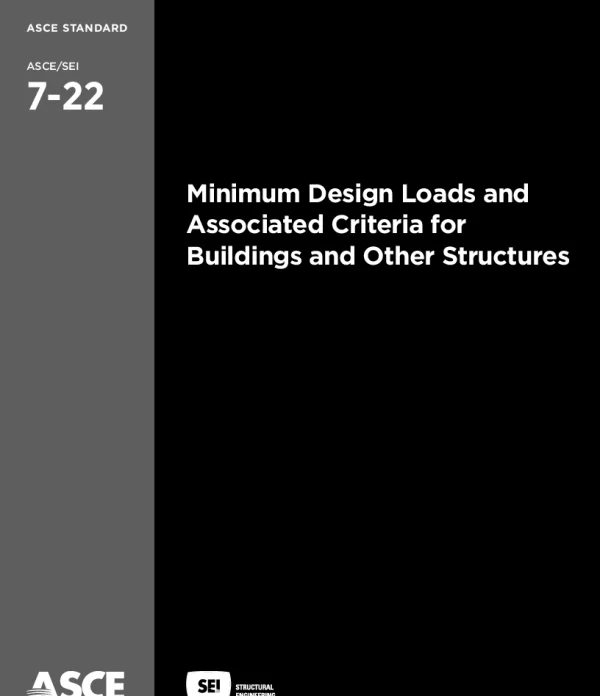-
资源简介
The ASCE 7-22 Minimum Design Loads and Associated Criteria for Buildings and Other Structures is a widely recognized standard in the field of structural engineering. Published by the American Society of Civil Engineers (ASCE), this document provides essential guidelines for determining the minimum loads that structures must be designed to withstand. It serves as a critical reference for engineers, architects, and other professionals involved in the design and construction of buildings and other structures.
ASCE 7-22 is part of a series of standards that have evolved over time to reflect advancements in engineering practices, materials, and building technologies. The current edition, 7-22, incorporates the latest research, data, and industry best practices to ensure that structures are safe, functional, and resilient against various environmental and operational loads. This standard is particularly important in regions prone to natural hazards such as earthquakes, wind, snow, and flood, as it outlines specific criteria for these conditions.
One of the primary purposes of ASCE 7-22 is to establish a uniform approach to load calculations. It defines different types of loads, including dead loads, live loads, wind loads, seismic loads, and snow loads. Each type of load is analyzed based on specific factors such as location, structure type, occupancy, and climate. By following the procedures outlined in this standard, engineers can ensure that their designs meet the required safety and performance levels.
The standard also addresses the importance of considering the dynamic nature of certain loads, such as wind and seismic forces. These loads can vary significantly over time and require specialized analysis techniques. ASCE 7-22 provides detailed methodologies for evaluating these forces, including the use of response spectra, wind pressure coefficients, and load combinations. These tools help engineers create more accurate and reliable structural models.
In addition to load calculations, ASCE 7-22 includes guidance on the application of these loads to different structural systems. It covers topics such as lateral force-resisting systems, diaphragms, and connections. These elements play a crucial role in ensuring the overall stability and integrity of a structure. The standard emphasizes the need for proper detailing and coordination between different components of the building system.
Another key aspect of ASCE 7-22 is its focus on the interaction between different loads and their combined effects. Engineers must consider how multiple loads can act simultaneously on a structure and how they influence each other. The standard provides load combination equations that account for these interactions, helping to prevent underestimation of critical forces that could compromise the safety of the structure.
ASCE 7-22 is not only a technical document but also a regulatory tool used by many local and national building codes. In the United States, it is often referenced in building codes such as the International Building Code (IBC) and the National Fire Protection Association (NFPA) standards. This integration ensures that the principles and requirements set forth in ASCE 7-22 are consistently applied across different jurisdictions and projects.
Furthermore, the standard encourages ongoing education and professional development among engineers. It is regularly updated to reflect new knowledge and technological advances. This commitment to continuous improvement ensures that the standard remains relevant and effective in addressing the challenges faced by modern structural design.
Overall, ASCE 7-22 Minimum Design Loads and Associated Criteria for Buildings and Other Structures is an indispensable resource for anyone involved in the design and construction of safe and durable structures. Its comprehensive approach to load analysis, combined with practical guidance and regulatory alignment, makes it a cornerstone of modern engineering practice. Whether designing a small residential building or a large commercial complex, adherence to the principles of ASCE 7-22 helps ensure that structures are built to last and perform safely under a wide range of conditions.
-
封面预览

-
下载说明
预览图若存在模糊、缺失、乱码、空白等现象,仅为图片呈现问题,不影响文档的下载及阅读体验。
当文档总页数显著少于常规篇幅时,建议审慎下载。
资源简介仅为单方陈述,其信息维度可能存在局限,供参考时需结合实际情况综合研判。
如遇下载中断、文件损坏或链接失效,可提交错误报告,客服将予以及时处理。